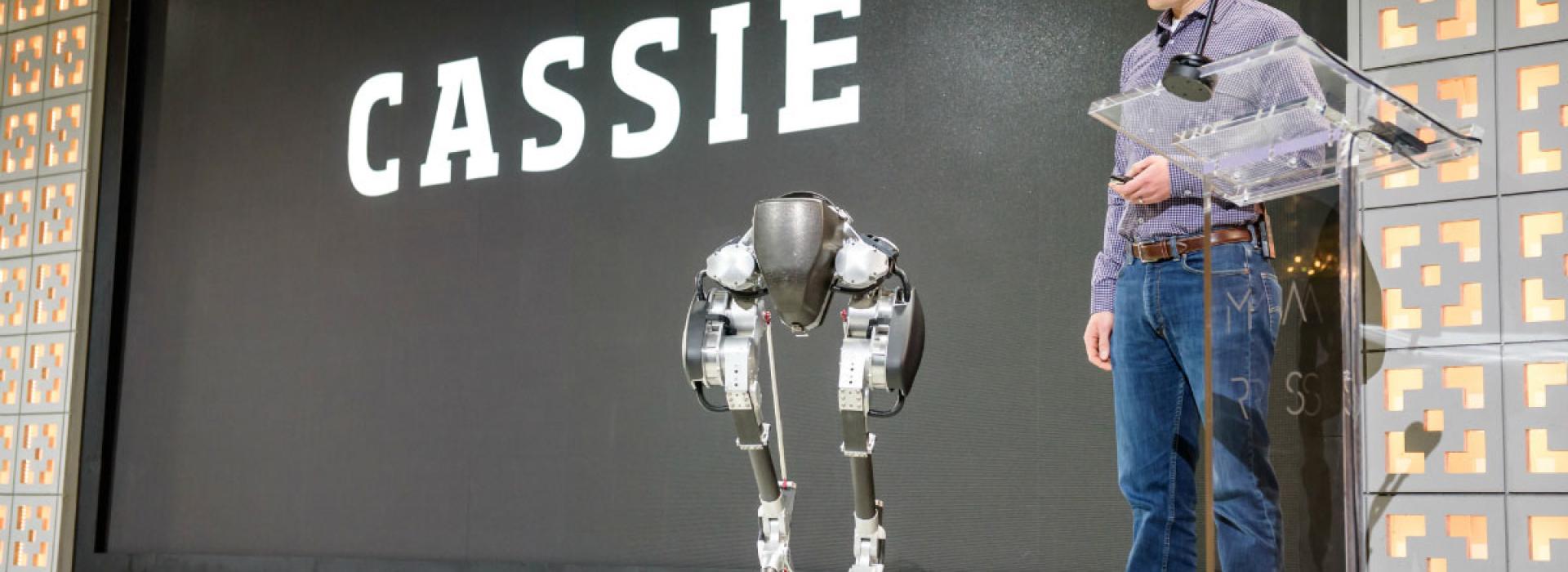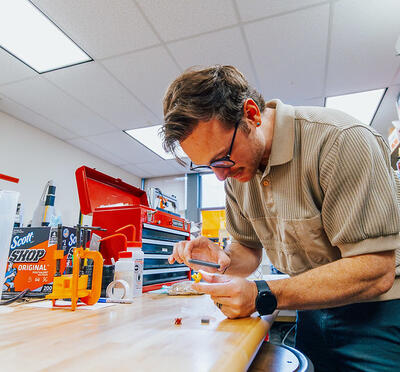Oregon State University College of Engineering’s robotics program is growing rapidly, propelled by breakthrough innovations, and industry leaders are taking notice.
The college has recently spun off one of its first businesses, a company focused on legged locomotion that may revolutionize robot mobility and enable robots to go anywhere people can go.
The company, Agility Robotics, was co-founded by Jonathan Hurst, associate professor of mechanical engineering and College of Engineering Dean’s Professor, with Oregon State graduate Mikhail Jones and Hurst’s graduate school classmate Damion Shelton. Based in Albany, Oregon, and Pittsburgh, Pennsylvania, it is licensing technologies first developed at the university and helping other academic and research institutions to grow the research community and educate a new generation of robotics engineers.
“This technology will simply explode at some point, when we create vehicles so automated and robots so efficient that deliveries and shipments are almost free,” said Hurst.
“Robots with legs can go a lot of places that wheels cannot. This will be the key to deliveries that can be made 24 hours a day, 365 days a year, by a fleet of autonomous vans that pull up to your curb, and an onboard robot that delivers to your doorstep.”
The company’s latest creation, a bipedal robot named “Cassie,” is getting a lot of attention, even garnering Hurst an invitation to Amazon’s exclusive MARS (Machine-Learning Automation, Robotics and Space Exploration) conference, where he showed off Cassie to a distinguished crowd of academics and business leaders.
Cassie can stand, steer, and take a pretty good fall without breaking. It’s half the weight of and much more capable than earlier robots developed at Oregon State.
“Our previous robot, ATRIAS, had motors that would work against each other, which was inefficient,” Hurst said. “With Cassie, we’ve fixed this problem and added steering, feet, and a sealed system, so it will work outdoors in the rain and snow as we continue with our controller testing.”
The particular issue of motors working against one another prompted some extensive theoretical research, to create the mathematical frameworks needed to solve the problem. The resulting leg configuration of Cassie looks much like an ostrich or other ground-running bird.
“We weren’t trying to duplicate the appearance of an animal, just the techniques it uses to be agile, efficient, and robust in its movement,” Hurst said.
“We didn’t care what it looked like and were mostly just working to find out why Mother Nature did things a certain way. But even though we weren’t trying to mimic the form, what came out on the other end of our research looked remarkably like an animal leg.”
Cassie, built with a 16-month, $1 million grant from the Advanced Research Projects Agency of the U.S. Department of Defense, is already one of the leading innovations in the world of legged robotics.
Company officials said they plan to do all initial production in Oregon and will focus their business on the commercial applications of legged robots. Hiring is anticipated for research, production, and development.
“The robotics revolution will bring with it enormous changes, perhaps sooner than many people realize,” Hurst said. “We hope for Agility Robotics to be a big part of that revolution. We want to change people’s lives for the better.”
Company officials said that access to the research base and education of students at Oregon State will aid its growth, providing the needed expertise and trained work force. Oregon State has already been ranked by Grad School Hub as the best in the western United States and fourth leading program in the nation in robotics research and education.




